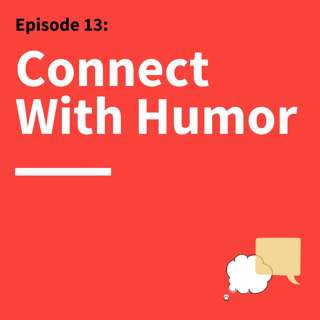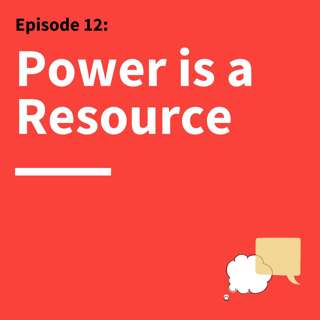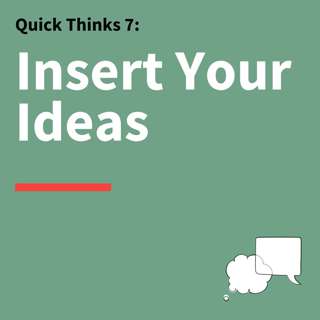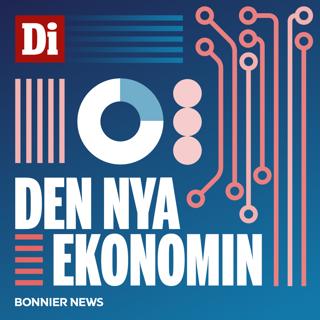
14. Be Better At Work: How to Communicate Better With Coworkers and Employees
Most of the work we do requires coordinating and collaborating with others. But how can we ensure the benefits of working with others, while avoiding conflict that’s inherent to communicating within groups?In this episode, Matt Abrahams speaks with Bob Sutton, Professor of Management Science and Engineering at Stanford School of Engineering and GSB Professor of Organizational Behavior (by courtesy) about maximizing productivity while minimizing what he calls “friction.” “So many organizations make the right things too hard to do and the wrong things too easy,” Sutton says. “For communication, to me, a big part of a leader's job is to be clear about where people should focus attention and where they should not focus attention.” Connect:Premium Signup >>>> Think Fast Talk Smart PremiumEmail Questions & Feedback >>> hello@fastersmarter.ioEpisode Transcripts >>> Think Fast Talk Smart WebsiteNewsletter Signup + English Language Learning >>> FasterSmarter.ioThink Fast Talk Smart >>> LinkedIn, Instagram, YouTubeMatt Abrahams >>> LinkedIn ********This episode is sponsored by Grammarly. Let Grammarly take the busywork off your plate so you can focus on high-impact work. Download Grammarly for free today
2 Juli 202026min

13. Make ’Em Laugh: How to Use Humor as a Secret Weapon in Your Communication
Humor does more than just make people laugh. It allows you to connect with your audience, diffuse tension, elevate status, and compel others to your point of view. Humor can also help you and your message stand out, yet most of us hesitate to use humor, especially in our professional lives.In this episode of Think Fast, Talk Smart, Matt Abrahams speaks with Stanford GSB Professor Jennifer Aaker and Lecturer Naomi Bagdonas about when and how humor operates in the work place. “Many believe that humor simply has no place amidst serious work,” Professor Aaker says. “Yet showing your sense of humor can make your peers and your friends attribute more perceptions of confidence and status to us while also cultivating a sense of trust.”Aaker and Bagdonas are are the authors of Humor, Seriously: Why Humor Is a Secret Weapon in Business and Life, which comes out in October of this year. Connect:Premium Signup >>>> Think Fast Talk Smart PremiumEmail Questions & Feedback >>> hello@fastersmarter.ioEpisode Transcripts >>> Think Fast Talk Smart WebsiteNewsletter Signup + English Language Learning >>> FasterSmarter.ioThink Fast Talk Smart >>> LinkedIn, Instagram, YouTubeMatt Abrahams >>> LinkedIn ********This episode is sponsored by Grammarly. Let Grammarly take the busywork off your plate so you can focus on high-impact work. Download Grammarly for free today
22 Juni 202029min

12. It's Not What You Say, It’s How You Say It: How To Communicate Power
Power exists in every relationship — whether we like that idea or not — and to be effective in any role, power needs to be understood. In this episode, Matt Abrahams sits down with Professor of Organizational Behavior Deborah Gruenfeld to discuss her new book, Acting with Power: Why We Are More Powerful Than We Believe. Deborah shares how body language can give us power, or take it from us, and advises how we can use power for good. Connect:Premium Signup >>>> Think Fast Talk Smart PremiumEmail Questions & Feedback >>> hello@fastersmarter.ioEpisode Transcripts >>> Think Fast Talk Smart WebsiteNewsletter Signup + English Language Learning >>> FasterSmarter.ioThink Fast Talk Smart >>> LinkedIn, Instagram, YouTubeMatt Abrahams >>> LinkedIn ********This episode is sponsored by Grammarly. Let Grammarly take the busywork off your plate so you can focus on high-impact work. Download Grammarly for free today
5 Juni 202022min

11. The Science of Influence: How to Persuade Others And Hold Their Attention
We’re constantly bombarded with competing images, messaging, and bids for our attention. That's why as communicators, it’s increasingly important to know what engages people.In this episode of Think Fast, Talk Smart, Matt Abrahams speaks with Stanford GSB Professor Zak Tormala about the subtle ways you can structure your speech to get people to pay attention. “It’s not really about tricking people into doing what you want,” Professor Tormala says. “It’s more about understanding the factors that actually engage people or open them up to your idea and maybe get them to see something a little bit differently.”Connect:Premium Signup >>>> Think Fast Talk Smart PremiumEmail Questions & Feedback >>> hello@fastersmarter.ioEpisode Transcripts >>> Think Fast Talk Smart WebsiteNewsletter Signup + English Language Learning >>> FasterSmarter.ioThink Fast Talk Smart >>> LinkedIn, Instagram, YouTubeMatt Abrahams >>> LinkedIn ********This episode is sponsored by Grammarly. Let Grammarly take the busywork off your plate so you can focus on high-impact work. Download Grammarly for free today
21 Maj 202023min

10. High-Stakes Communication: How to Manage Anxiety When Speaking in Front of Others
Most people feel nervous in situations such as speaking in front of a class, pitching a big idea, or giving a toast, yet research-backed techniques can help manage both the symptoms and sources of our speaking jitters.Matt Abrahams sits in the interviewee chair for this episode and talks with the podcast's producer, Jenny Luna, to share his backstory with public speaking anxiety and how by recognizing the causes of our nervousness, and applying mitigating techniques, we can gain confidence in our communication. Connect:Premium Signup >>>> Think Fast Talk Smart PremiumEmail Questions & Feedback >>> hello@fastersmarter.ioEpisode Transcripts >>> Think Fast Talk Smart WebsiteNewsletter Signup + English Language Learning >>> FasterSmarter.ioThink Fast Talk Smart >>> LinkedIn, Instagram, YouTubeMatt Abrahams >>> LinkedIn ********This episode is sponsored by Grammarly. Let Grammarly take the busywork off your plate so you can focus on high-impact work. Download Grammarly for free today
7 Maj 202020min

9. Quick Thinks: How Being Present-Oriented Improves Communication
Although it may feel counter intuitive, letting go of our prepared notes and focusing on the present can help us communicate more effectively.In this Quick Thinks episode, host Matt Abrahams speaks with Stanford University lecturers and improv theater experts Dan Klein and Adam Tobin on how staying in the moment allows communicators to connect with their audience. Connect:Premium Signup >>>> Think Fast Talk Smart PremiumEmail Questions & Feedback >>> hello@fastersmarter.ioEpisode Transcripts >>> Think Fast Talk Smart WebsiteNewsletter Signup + English Language Learning >>> FasterSmarter.ioThink Fast Talk Smart >>> LinkedIn, Instagram, YouTubeMatt Abrahams >>> LinkedIn ********This episode is sponsored by Grammarly. Let Grammarly take the busywork off your plate so you can focus on high-impact work. Download Grammarly for free today
23 Apr 20207min

8. Don't Get Lost in Translation: How Non-Native Speakers Can Communicate With Confidence
Having to communicate in a language other than our native tongue can be quite a challenge. In this podcast episode, host Matt Abrahams speaks with Ken Romeo, the Associate Director for the Stanford Language Center, on specific tactics and approaches non-native speakers can use to prepare for speeches or presentations. Ken also shares advice on how to handle in-the-moment challenges, improve fluency, and let go of the need for perfection.Connect:Premium Signup >>>> Think Fast Talk Smart PremiumEmail Questions & Feedback >>> hello@fastersmarter.ioEpisode Transcripts >>> Think Fast Talk Smart WebsiteNewsletter Signup + English Language Learning >>> FasterSmarter.ioThink Fast Talk Smart >>> LinkedIn, Instagram, YouTubeMatt Abrahams >>> LinkedIn ********This episode is sponsored by Grammarly. Let Grammarly take the busywork off your plate so you can focus on high-impact work. Download Grammarly for free today
10 Apr 202017min

7. Quick Thinks: Use This Framework to Speak up in Virtual Meetings
We've all been in the situation where you have something important to contribute to a meeting and you don't know how to insert your thoughts. On this Quick Thinks episode of Think Fast, Talk Smart, podcast host Matt Abrahams offers the three ways to insert your ideas, either by paraphrasing, asking a question, or stating an emotion. He also outlines the "What, So What, Now What" framework and explains how to use this structure to communicate your ideas more effectively. Connect:Premium Signup >>>> Think Fast Talk Smart PremiumEmail Questions & Feedback >>> hello@fastersmarter.ioEpisode Transcripts >>> Think Fast Talk Smart WebsiteNewsletter Signup + English Language Learning >>> FasterSmarter.ioThink Fast Talk Smart >>> LinkedIn, Instagram, YouTubeMatt Abrahams >>> LinkedIn ********This episode is sponsored by Grammarly. Let Grammarly take the busywork off your plate so you can focus on high-impact work. Download Grammarly for free today
3 Apr 20205min






















